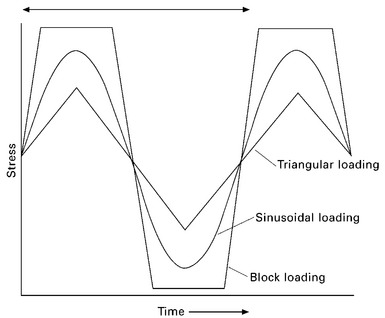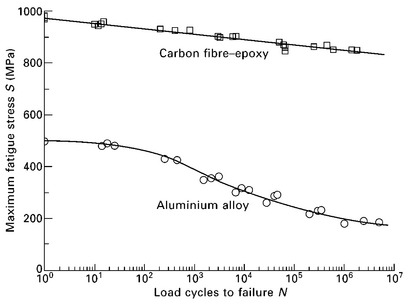Fatigue tests measure the resistance of materials to damage, strength loss and failure under the repeated application of load. Aerospace materials must withstand repeated loading for long periods of time, which is in the order of 15 000–20 000 flight hours for modern jet engine materials and anywhere from 80 000 to 120 000 h for airframe materials. Materials can be damaged by repeated loading, which causes a loss in strength and eventually leads to complete failure. Fatigue tests are performed to measure the reduction in stiffness and strength of materials under repeated loading and to determine the total number of load cycles to failure.
Fatigue tests are performed by repeated tension–tension, compression– compression, tension-compression or other combinations of cyclic loading. The fatigue stress is applied repeatedly to the specimen using a variety of load waveforms, as shown in Fig. 5.21. The shape of the loading wave is usually sinusoidal, although triangular and block loads are also used. The frequency of the load cycles is generally low, typically 1–20 Hz (i.e. load cycles per second), to avoid heating of the specimen, which can affect the fatigue results.

5.21 Examples of fatigue-loading waveforms.
The basic method of determining the fatigue resistance of materials is the fatigue life (S-N) curve. This curve is a plot of the maximum fatigue stress S against the number of load cycles-to-failure of the material N. The curve is plotted with the fatigue stress as a linear scale and load cycles-to-failure as a log scale. Data for the curve is generated by fatigue testing specimens at different fatigue stress levels to measure the number of load cycles-to- failure. Examples of fatigue life curves for aluminium alloy and carbon-epoxy composite are presented in Fig. 5.22. A fatigue test can be stopped after a specific number of load cycles and then the specimen is loaded to fail to measure the residual fatigue strength.

Leave a Reply